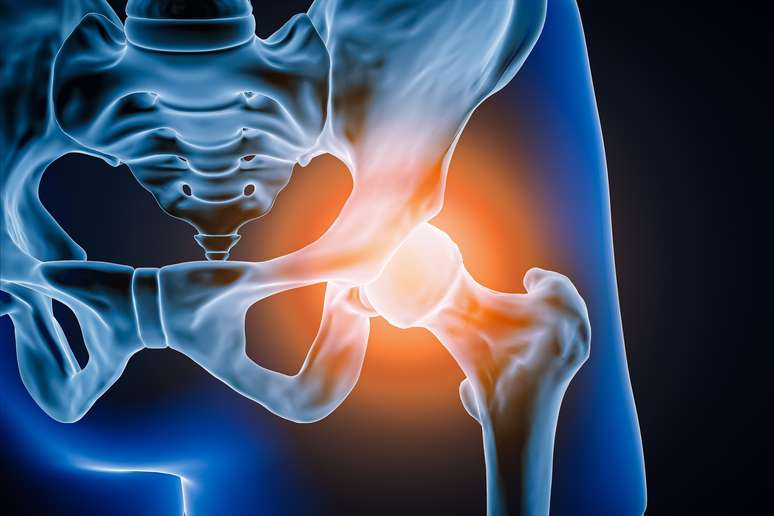Prosthetic surgery, like that of President Lula, is an asset when other treatments fail
Osteoarthritis (also called osteoarthritis or osteoarthritis) is the name given to the process of degeneration that affects the cartilage, structures essential for the proper functioning of joints such as the shoulders, knees and hips. According to the Brazilian Society of Rheumatology, this pathology is responsible for 7.5% of all absences from work in Brazil. The knees and hips are the most affected areas, as they are the ones that suffer the most from overload on a daily basis due to the weight of the body.
It should be clarified that arthrosis is one of the most common causes of arthritis (a term used to designate any inflammation of the joint). However, osteoarthritis is a very different condition from rheumatoid arthritis, a disease whose inflammation develops due to changes in the immune system and not due to wear and tear of the cartilage.
Friction between joints
Orthopedic surgeon Joaquin Sanchez-Sotelo, from the Mayo Clinic in the United States, explains that the cartilage causes the joint bones to slide over each other like ice cubes, i.e. without friction. When these structures wear out, bone spurs begin to form in the body and, at a certain point, movement begins to cause pain, which over time can become disabling.
Although cartilage wear and tear is common with aging, not all older adults suffer from osteoarthritis. What’s more: even if it is more frequent after the age of 60, there are those who develop the problem as early as the age of 40, to the point of having to undergo prosthesis surgery. This may occur for the following reasons:
- A person may be born with some type of deformity in the joint that makes it more prone to degeneration.
- The person may suffer some type of injury or fracture of the joint, resulting from falls or accidents, and then begin to suffer from osteoarthritis.
- The person has no history of injury, but has cartilage more prone to degeneration, due to a genetic predisposition. It is called idiopathic degenerative osteoarthritis.
Frequent myths about osteoarthritis
Discover some common facts, myths and truths about osteoarthritis, which include general recommendations for those who want to keep their joints healthy longer. Look what they are:
1. Overweight and obesity increase the risk
REAL. Being overweight is a major cause of joint wear, “so avoiding it is an important part of prevention,” the Mayo Clinic surgeon emphasizes. This risk factor explains why surgeries due to osteoarthritis are more common on the knees, first, and then on the hips: these are the joints that suffer most when people are overweight or obese.
2. Supplements solve the problem
MYTH. Sanchez-Sotelo comments that there are many supplements marketed with the purpose of preventing or improving joint wear and tear, such as chondroitin, glucosamine and collagen. “There is no convincing evidence that they work,” he warns. The doctor believes that some patients report an improvement in pain when using these products, but suggests that this may be a placebo effect. While taking a collagen supplement won’t harm your joints, people can spend a lot of money and not get the expected results.
3. Food can reverse the process
MYTH. The Mayo Clinic surgeon states that there are no specific foods capable of reversing the degenerative process of osteoarthritis, although much has been said about the anti-inflammatory effect of some diets. However, he warns that any weight-loss diet is welcome for those who have the problem, as it reduces the load on the joints.
As for specific nutrients, he notes that it’s important to ensure adequate calcium and vitamin D intake to preserve bone mass. He points out that osteoporosis, especially common in women after menopause, can increase the risk of fractures, which will have a significant impact on pain and the degenerative process of osteoarthritis.
Finally, he says adequate protein consumption is extremely important for joint surgery patients. Which brings us to the following recommendation:
4. Having strong muscles prevents wear and tear
REAL. Our joints are better protected the stronger the muscles surrounding them. Therefore, strength and endurance exercises are essential to avoid injuries and also to delay joint wear and tear. However, those who experience pain need to be accompanied by a professional, such as a physiotherapist, who knows the best movements and activities to strengthen the muscles without overloading the joints.
5. A sedentary lifestyle is harmful
REAL. Standing still for a long time damages the metabolism, facilitates weight gain and, therefore, can be a risk factor for osteoarthritis. Those who suffer from the problem also need movement, as they tend to have what is called “initial pain”, which bothers them after the person remains in the same position for a long time. This is one more reason to ask for adequate guidance during physical activity: walking too much can also cause a lot of pain in those suffering from knee or hip arthritis, so it is necessary to find a balance.
6. Some sports encourage burnout
REAL. Sanchez-Sotelo, who works in the United States, says he has seen many young patients with osteoarthritis due to high-impact sports such as American football and CrossFit. Furthermore, those who carry too much weight may also suffer more from this pathology, especially if there is already a genetic predisposition. Running is also not the best activity for those who have a tendency to lose weight: cycling or water activities may be more suitable.
Injections for osteoarthritis: understanding the differences
When joint pain and inflammation are very intense, your doctor may recommend some corticosteroid injections, a treatment known as “infiltration.” But this resource must be used occasionally: in the long term, excessive use can damage the joints, according to studies.
Today, injections of substances derived from hyaluronic acid (viscosupplementation) are often recommended, which can significantly reduce pain and delay surgery for the placement of a prosthesis. These substances are similar to synovial fluid, found in joints, which works as a kind of lubricant. There are no side effects and the results can last up to a year. Only qualified doctors can perform these injections, usually a rheumatologist or orthopedist.
Asked about some newer treatments, such as the use of stem cells and platelet-rich plasma, Sanchez-Sotelo says that, to date, there is little consistent evidence of their effectiveness, although some patients report improvements. It is possible that in the future there will be more innovations in the field of regenerative medicine for joint sufferers.
When is surgery necessary?
When viscosupplementation, physical therapy, and common painkillers are no longer able to relieve pain, surgery may be necessary. In some specific cases, however, there may be an indication for arthroscopy (a less invasive surgery) to remove the fragments that have detached and which can cause pain or make movement difficult. The last resort is the placement of a prosthesis, a procedure that has seen many advances and which today can also be recommended to the elderly. But it’s important to remember that dentures only last 15 or 20 years.
Sources: Mayo Clinic and Brazilian Society of Rheumatology
Source: Terra
Ben Stock is a lifestyle journalist and author at Gossipify. He writes about topics such as health, wellness, travel, food and home decor. He provides practical advice and inspiration to improve well-being, keeps readers up to date with latest lifestyle news and trends, known for his engaging writing style, in-depth analysis and unique perspectives.







